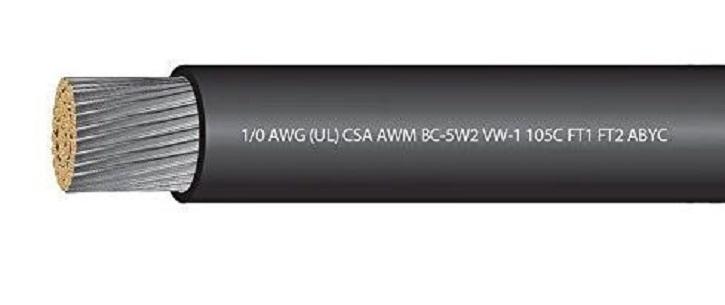One of the most important parts of designing any electrical system understands the ampacity of the wiring within. When you’re upgrading, rewiring, or even initially implementing a battery for a marine vehicle, it’s important to understand the various measurements of Awg Marine Battery Cable and how each measurement affects your system. Getting the right battery cable is the first step to having a solid, functional system, and, in order to get the right cable, you need to understand the terminology and rules. This article will explore the basics of AWG marine battery cable.
The first facts to pin down are the definition and history of AWG, also known as American wire gauge. American wire gauge is the primary measurement for cable diameter in the United States, invented in 1857 in order to standardize cable and wire measurements. Previous to the creation of AWG, most wire companies maintained their own wire gauge measurements, meaning that electrical systems were considerably harder to maintain and interconnect.
The gauge of a wire is an incredibly important measurement, as it significantly influences the ampacity of a wire. Ampacity is a calculation of a cable’s ability to carry an electrical current, and a higher ampacity represents a cable that can carry a stronger current. Cables with insufficient ampacity for a system can overheat, causing damage and posing a serious danger to the system. Additionally, overheated wires can become a dangerous fire hazard, so it is important to ensure that cables of the proper AWG measurement are used.
Now that a history and definition for AWG has been laid out, it’s important to understand what sets AWG marine battery cable apart from non-marine AWG cable. The answers to this portion lie largely in the manufacturing process. First off, marine-grade cables are made with tinned copper strands. These strands have been coated with an ultra-thin layer of tin which protects the copper strands from corrosion that can be caused by moisture buildup while traveling on the water. All quality marine cables will be tinned, and non-tinned cables shouldn’t be used on the water.
The second major factor that sets AWG marine battery cable apart from non-marine AWG cable is the type of insulation used. Marine cable is manufactured with significantly more durable and hardy insulation that is designed to resist water, salt, and, depending on the type of marine cable, even certain oils. Looking for cables with certified marine insulation types is going to ensure you have the durable cables you need in order to have a safe, long-lasting system.
Now that you understand the basics, it’s time to prepare for your project. In order to get the correct measurement of AWG for your cables, it is recommended to have your old cables, your owner’s manual, or, if neither one of those apply, a well-documented recording of the electrical output of your battery. Because battery cables are unlikely to be running a significant distance, length is less impactful on the functionality of your system; however, in certain setups where your battery is very far from your engine, you may need to take length into account.
Thankfully, charts for the AWG exist and are publicly available, which can help you calculate your gauge and length needs, so long as you know the current you’ll be running through your system. Provided you have all the information mentioned above, you should be ready to begin your project.
When you’re ready to buy your cables, make sure you work with a company that knows the trade. Here at www.ewcswire.com, our products are backed by a team of professionals who can help you find the right product for your unique project. Come visit today and see all the high-quality supplies we have to offer!
For more information about Fire Alarm Cable and 4/0 welding cable Please visit : Electric Wire & Cable Specialists (EWCS).












No Comments